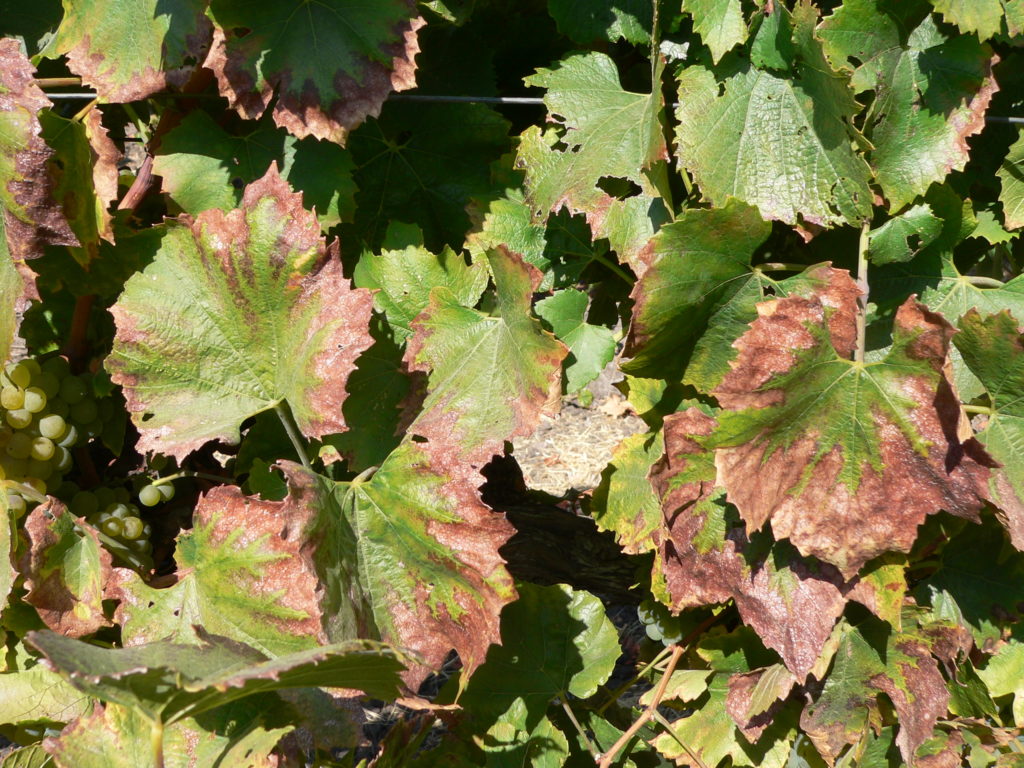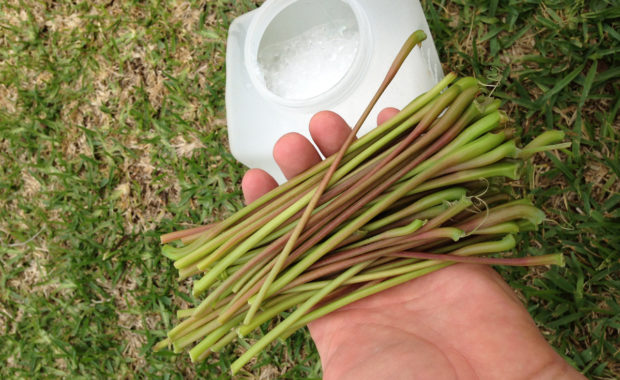Fear not! Potassium is your friend
Holding off on K fertilization may be damaging your wine quality
There’s a lot of headbutting between grape growers and winemakers. I get why. Lush green canopies with active shoot tips mid-July look pretty, but they don’t usually make good wine. On the other hand, leaner vines with drastically reduced crop load don’t yield much profit for the grower. Now that harvest is on the horizon, the winemakers are scurrying out of their air-conditioned cellars (where were you guys at pruning?) and they have all kinds of opinions about what they want to see on picking day. Meanwhile, the guy or gal who’s tended the vineyard all year and who may or may not even drink wine (Pabst anyone?), watches in horror as the buyer lops off cluster after cluster because the crew “didn’t thin right”. The struggle is real and I’m not here to get in between you two (pass the popcorn). However, there is one bone of contention that shouldn’t be one and her name is potassium.
While most winemakers understand the importance of potassium fertilization, they freak out when it’s applied late. This is because potassium ions form an insoluble salt with tartrate ions and can leave your wine lacking acidity. High pH wines (pH > 3.7) are not only flabby tasting, they’re also microbially perilous as one of the things that makes wine so darn hardy is its acidic quality.
Potassium can cause a disaster if it’s concentration in must is above 1800 ppm, although Boulton (1980) indicates you should aim below 1000 ppm to be safe. Regardless, time after time I’ve seen a vineyard suffering severe potassium deficiency, and winemakers are still against any fertilizer application. This is especially frustrating because if you take tissue samples at bloom and veraison (as you should!), you may not even know you’re deficient until you’re past the “deadline” for potassium fertilization.

Ask not what potassium can do for you...
Water relations:
First and foremost, K is responsible for osmotic regulation. As the predominant cation in plants, K provides much of the “pull” needed to draw water into plants. No place is this more evident than in guard cells, the mouth-shaped cells that surround the stomata. When stomata are open (K flows into the cells), the plant transpires, cooling its tissue while at the same time allowing for the gas exchange necessary for photosynthesis. Depending on variety, the leaf may close its stomata (K flows out) to conserve water.
If your vines are severely K deficient, they are going to be more sensitive to water stress and less likely to react to deficient hydration. This year, there’s no need to stress vines more than you have to.
Energy synthesis:
When the plant cannot regulate its stomata, gas exchange suffers and so does photosynthesis. High-energy phosphate molecules (ATP) are the powerhouse of all cells. Their synthesis declines when K declines. Anything needing energy in the plant depends on potassium.
Another interesting thing is that when K gets low, the vine starts using another osmolyte: sucrose. Sucrose getting trapped in the leaves can bring about feedback inhibition of photosynthesis as a whole.
Enzymatic activation:
K is vital in the activation of many enzymes, especially those at the growing tips of the shoots and the roots. If you’re suffering from the drought this year, you may have found it difficult to get a full canopy. Some of this could be just plain old water stress, but as we’ve seen, the lack of rain water has brought on nutritional deficiencies where we’ve never seen them before. Irrigation doesn’t always help to mitigate this given that you can only irrigate where the emitter is and there are roots all around the vine in places that remain dry.
Most essential nutrient cycling , including K, takes place in the upper 18 inches of soil. Low K doesn’t just mean sluggish growth of shoot tips but also root tips. Interestingly, when K gets low, there’s more lateral growth of the root system rather than vertical growth. This is great for a vine that needs to go looking for K but if that vine is also struggling with water stress, it’s choosing to go after nutrients rather than water.
Sugar loading aka ripening:
K is essential for maintaining electrical neutrality and for the synthesis and correct functioning of ATP, the powerhouse of the cell. When K is deficient, sugar loading takes a nose-dive so you may end up with fruit that doesn’t ripen.
Sugar accumulation is also theorized to be the trigger for anthocyanin synthesis. Therefore, you may be sacrificing color in addition to plain old physiological ripeness (i.e. sugar). (Do and Cormier, 1991).
This is particularly important if your vines have Red Blotch, a virus that limits the vine’s capacity to ripen fruit. We’ve found keeping on top of potassium fertilization can prolong the life of a virused vineyard at least for a few seasons…you will eventually want to rip that puppy…rip it right out.
You may even lower your acidity!
When your leaves senesce early, either due to excessive water stress or severe nutrient deficiency, that K in the leaves gets exported, preferentially to fruit and permanent structures. So if you’re holding off on K at all costs to maintain acidity, this may backfire. It’s like rain on your wedding day.
So in other words…
A lack of Potassium may mean your acidity is safe (or not), but at the expense of yield, ripeness, and overall quality.

Knowledge is power
The best way to keep tabs on your vines’ nutrient status is with tissue sampling, which you should do at bloom and veraison. We like working with petioles because we’ve found them to be more sensitive to K in particular. At bloom we like to see K at 2.25 to 2.5% dry weight. At veraison we like to see K between 2 to 2.25%. If you’re using blades, your lab will provide you with desirable targets. If you see levels drastically lower than 2%, you should consider applying potassium, even late in the season. But ideally you want to handle the low K situation as early in fruit development as possible.
What should I apply?
There are a lot of options out there for potassium fertilizer. Good old sulfate of potash (0-0-50) can be injected through the drip, but it isn’t super soluble so you may want to look into getting a solution master (not just for K, for everything). Potassium thiosulfate (0-0-25) is a good liquid fertilizer option. We’ve also found potassium acetate to be an effective foliar method of applying K, which can be a great way to fertilize if you have high Mg soils that tend to inhibit K potassium uptake. Rates will depend on the intensity of deficiency, soil chemistry, and time of the season, but in all cases, don’t overdo the K fertilizer. Then, your winemaker might have a legit beef with you.

In conclusion...
There are a lot of reasons for winemakers and growers to argue, but potassium shouldn’t be one of them. Like most things, it’s a matter of measuring and responding appropriately.
Citations:
Boulton, R. (1980). The general relationship between potassium, sodium and pH in grape juice and wine. American Journal of Enology and Viticulture, 31(2), 182-186.
Do, C. B., & Cormier, F. (1991). Effects of low nitrate and high sugar concentrations on anthocyanin content and composition of grape (Vitis vinifera L.) cell suspension. Plant Cell Reports, 9(9), 500-504.
Jackson, R. S. (2008). Wine science: principles and applications. Academic press.
Keller, M. (2020). The science of grapevines. Academic press.
Tisdale, S. L., Nelson, W. L., & Beaton, J. D. (1985). Soil fertility and fertilizers. Collier Macmillan Publishers.


